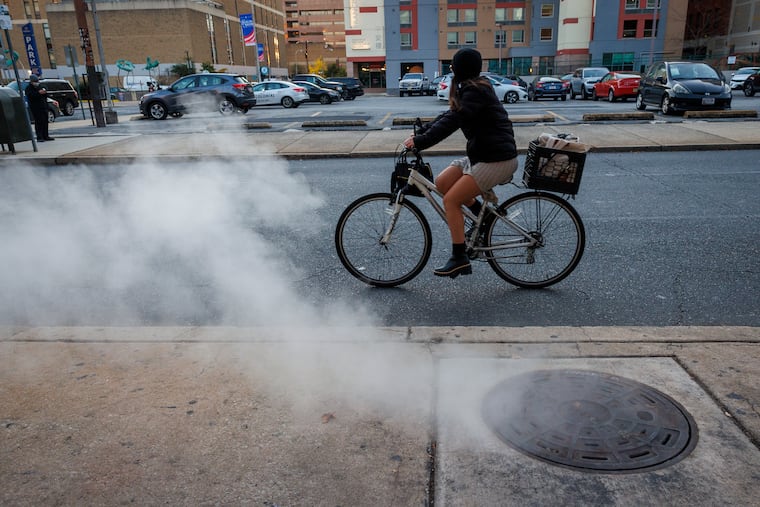Temperatures in the 20s end the ‘growing season’ in the Philly region. The ‘heat island’ spares the airport.
Readings were as low as 23 degrees, but it didn't get below 34 at PHL.

Temperatures dropped into the 20s in much of the Philly region early Thursday, and the National Weather Service declared an official end to the “growing season.”
That includes the city, even though it never got below 34 degrees on the official thermometer at Philadelphia International Airport, which historically has a particular resistance to autumnal freezes.
With skies clear and winds nearly calm, conditions were ideal for the remnant of Wednesday’s daytime heating to radiate into space.
» READ MORE: The airport, and the city, are resistant to cooling.
Also, as typically happens in such conditions, readings varied considerably.
Overnight lows ranged from 23 degrees in Willow Grove, Montgomery County, to 25 in Media, Delaware Couty; 27 in Cherry Hill, Atlantic City Airport, and Mount Holly; and 28 in West Chester, the National Weather Service said.
Although PHL didn’t make it to freezing, the growing season — which the agency says ends in a given county when the temperature reaches 32 degrees or below in a majority of the county — was declared over in Philly, said Patrick O’Hara, meteorologist in the Mount Holly office.
That PHL weighed in with the highest reading wasn’t surprising and was the result of various very local effects. “The air gets stirred up a little more,” said Patrick O’Hara. Plus the Delaware River is nearby, and water temperatures Thursday morning were around 58 degrees, according to NOAA.
And the fact that readings in the city generally were higher likely was related to the the “urban heat island” effect. In the city, paved surfaces and buildings store heat by day and are reluctant to surrender it after sunset.
» READ MORE: Urban heating can be dangerous in summer
A historical note: Although urban heating in all probability has been a factor since people decided to congregate in cities, it wasn’t identified until the 19th century. British pharmacist Luke Howard documented that London was warmer than the surrounding countryside and first published his findings in 1818.
In the 20th century, Helmut Landsberg, a renowned climate scientist, conducted a grand experiment by tracking weather conditions during construction of Columbia, Md., a planned community built on about 15,000 acres of mostly open space. When he began recording temperatures in 1968, only about 220 people lived there. He chronicled the rising temperatures during the buildup as the population increased 10-fold.
According to the EPA, on average urban environments increase temperatures 1 to 7 degrees Fahrenheit, relative to the surrounding countryside.
Another hard freeze is expected in areas outside the city early Friday; however, with the end of the growing season, the weather service won’t be issuing further freeze warnings.
Not even for the airport.